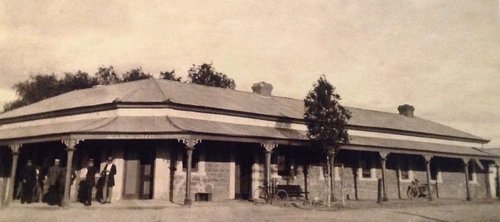William Jnr and Jane Jacka
The name “Sunnyside” for the Jacka farm near Pine Creek Chapter 16
Towards the end of 2018, we were contacted by John Smyth who now lives in Riverton SA, south of Auburn. Riverton, like the land in the area which John farmed for many years, is within a few kilometres of the location near Pine Creek where William Jacka Jnr and Jane tried farming, 1862-66. John and his wife Meg have a wealth of knowledge about the area, its people and history. John is not related to the Jackas but took an interest in their story (and The Complete History) after hearing it at a local interest group exchanging family histories. He alerted us to an error about the location of the Wesleyan Chapel (see The Coombe Story Continues for more on this); and he was surprised that when registering the births of children near Pine Creek, the Jackas identified their location as “Sunnyside”. John knew that the “Sunnyside” near Pine Creek did not correspond with the Jacka’s land. Property records clearly show that William Jnr owned Section 299 in the Hundred of Saddleworth but no other nearby sections.
When we were researching William Jacka’s time as a farmer, Kay Lambert of the National Trust in Auburn told us that in the twentieth century, the name Sunnyside was associated with a different property, not Section 299. “Auntie Chub” who lived to 104 had been a long-time “Sunnyside” resident. It was unclear when we wrote the book, how this related to the Jacka’s use of the name. John Smyth knew that “Sunnyside” was actually Section 300, just across Quandong Rd from Section 299. This was owned from 1864 to 1982 by the English family: Auntie Chub’s real name was Ocalia English, the last of her family to live at Sunnyside. Perhaps it is significant that when William Jacka offered his land, house, farm buildings and crop at auction, it was bought by the English family, brothers James and William, “farmers of the Section”. The land remained in their family until 1982.
So the Jackas seem to have adopted the name of the neighbouring property to identify their location. Was this just a convenient approximation or did the Jacka/English association involve working the two properties together? The English family owned other land in the general area and it is possible they were already established farmers nearby when the Jackas arrived in 1862. Former blacksmith William might have benefited from working with more experienced farmers.
Hammond history Chapters 18 and 21
Nick Hall has contacted us. His grandparents now own the Hammond Hotel and Nick runs a Hammond History Team. He provided this early photograph of the Hammond Hotel which he believes was taken before 1900 and possibly earlier to help publicise the new hotel. The Hammond History Team have an interesting Facebook page and website which have some great old photographs and input from a number of people with Hammond connections.
hammond hotel (courtesy nick hall
